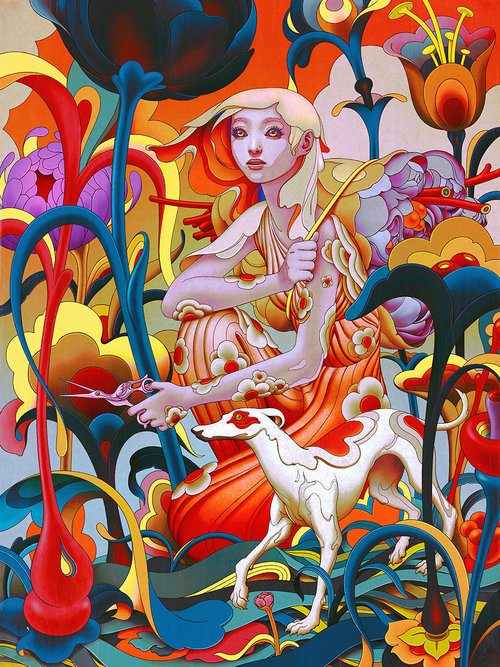James Jean (1979, Taipei, Taiwan), is a Taiwanese-American visual artist working primarily in painting and drawing. He lives and works in Los Angeles, where he moved from New York in 2003.
Jean was born in Taiwan and raised in New Jersey. During his early education, he explored various forms of artistic expression, including the piano and trumpet. He attended the School of Visual Arts in New York City, from which he graduated in 2001.
In 2001, Jean became a cover artist for DC Comics and Marvel Comics, garnering seven Eisner awards, three consecutive Harvey awards, two gold medals and a silver from the Society of Illustrators of Los Angeles, and a gold medal from the Society of Illustrators of New York. He also worked in advertising, and has contributed to many national and international publications. His clients included Time Magazine, The New York Times, Rolling Stone, Spin, ESPN, Atlantic Records, Target, Linkin Park, Playboy, Knopf, Prada among others. He illustrated covers for the comic book series Fables and The Umbrella Academy, for which he has won six Eisner Awards for “Best Cover Artist”. In 2006, he won Best Artist from the World Fantasy Awards. He also did the album art for My Chemical Romance ‘s album The Black Parade, which was released in 2006.
In 2008, Jean retired from illustration projects in order to focus on painting. Combining abstract figuration with loose, gestural marks, Jean creates layered compositions that evoke personal or collective experiences. Dream-like and at times disorienting, his works are expressive of narratives unbounded in time or space, and draw upon art historical antecedents ranging from Baroque painting traditions to Japanese woodblock prints and Chinese silk scroll paintings.
Sketchbooks
Sketchbooks have sustained a vital space in Jean’s practice, solidifying importance in his time during art school as a rejection of the strict academic focus of visual arts studies. In favor of the freedom found in sketching during his childhood, Jean embraced sketchbooks as a means of exploring figures and imaginative creatures, synthesizing doodles, line drawings, and journalistic elements with more polished compositions in black-and-white and color. For Jean, sketchbooks are spaces for both experiment or study and for finished artworks in their own right.














